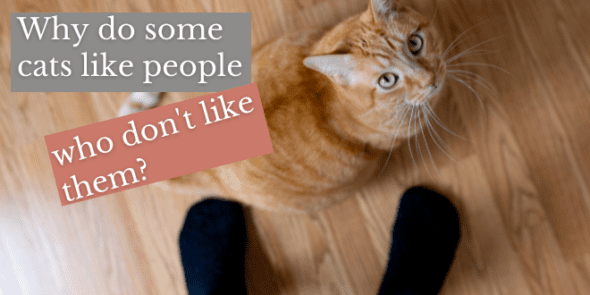1. Cat Allergies
It is reasonable why individuals with aversions to felines won’t be remotely close to them. They may not “disdain” felines in essence, yet they may legitimately detest the manner in which feline dander sets off their gentle to extreme sensitivity side effects.
Feline hair and other pet hair are really not the guilty parties; the triggers individuals respond to are the coat-defensive proteins emitted by the feline’s skin. Individuals with feline sensitivities may likewise be responding to protein atoms that are emitted into the feline’s spit or pee.
Sadly, there is a far-reaching conviction that feline sensitivity stems essentially from drifting “actual residue and hair.” The overall population needs consciousness of the genuine reason: a response that is a substance in nature, fit for prompting areas of strength for extremely. Feline sensitivity can be serious to the point that it causes an anaphylactic response similar to the dangerous aversions to nuts and different food varieties. It might cause the stopping of aviation routes, requiring crisis clinical consideration.
2. Gnawing and Scratching
They frequently convey vocally, and some of the time even truly, with a quick smack of outstretched paws when a lot of petting overwhelms them.
Forceful scratching and gnawing ways of behaving are advanced right off the bat in a feline’s life, during kittenhood. Felines that are instructed that human hands are playtoys will frequently chomp their proprietors’ hands when they become grown-ups.
It is possible that individuals who abhorrence felines had a terrible involvement in a youthful feline when they were small kids themselves; a grown-up ought to continuously be available to show both kids and cat the protected furthest reaches of play. Numerous youthful families even surrender their most memorable feline due to this misjudged adolescent scratching or gnawing conduct.
At the point when you show your felines that scratching and gnawing ways of behaving are not permitted, it might simply act as an illustration to your watchful guests that felines can be re-shown how to not scratch and chomp at whatever stage in life.
3. Territory Ranges Beyond the Household
Allowed the opportunity, most felines will select to poop outside in rich and profound nursery soil, regardless of whether that dirt is in a neighbor’s yard. Outside felines will leave their droppings uncovered as a regional stamping to transfer data to different felines nearby. Close-by families won’t be saved, as felines don’t comprehend property lines or other yard limits.
Felines will likewise productively splash pee against outside dividers and entryways of different homes in the neighborhood to check their external regions, particularly assuming that felines are known to abide inside. This causes two separate issues when the indoor felines either notice the feline external through a window or smell the bitter scent of the pee splash:
Diverted Aggression: When a house feline sees an outsider in its yard, it might reflexively act forcefully toward the nearest accessible feline, perhaps one of its guiltless housemates.
Regional Spraying: By a similar token, on the off chance that a bizarre feline is sufficiently intense to splash beyond an entryway, the feline who lives there will intuitively check within a similar entryway.
4. Tricky Relationships With Humans
Certain individuals disdain felines since they are flighty and reserved with regard to associations with their human housemates. On the off chance that somebody makes a feline self-conscious or terrified, a feline will make certain to spread the word about it with a murmur or a smack.
In contrast with subordinate and carefree canines, felines might appear to be unappreciative. In nature, however, felines and canines advanced totally different ways of life. Canines advanced to live in family packs, as the collaboration was expected to chase enormous prey. Wild felines eat more modest prey and developed to be solitary trackers and fishers. But it is that exact same autonomous nature of felines that makes them truly versatile to our changing surroundings and changing everyday schedules.
However long as felines are associated with people like cats, felines can frame close bonds with their people. Yet, when an independent free feline demonstrates in a distant way, it is most frequently because of a renewed individual coming into the family.
Indeed, even the timid feline is perceptive and evaluates the general security of rookies. Given chance to learn, a feline will generally come around to acknowledge them as a companion and confided in the guardian.
5. Killing Birds
Felines, being committed carnivores, are hunters. Whether the feline is indoor-just, free-meandering however claimed, or wild and stray, birds and mice are a feline’s number one prey.
Public gatherings, for example, the Alley Cats Allies and Alley Cat Rescue have laid out conventions to help wild feline provinces in oversaw care. The felines are caught, fixed, or neutered, and afterward delivered once more into their settlements.
An indispensable piece of all overseen care for wild felines is taking care of the felines, which blocks their need to kill wild birds for food. Stray Cat Rescue goes above and beyond in saving the little cats and to some degree tame youthful grown-ups in their reception place.
However, feline proprietors can likewise do their part. Larks and brilliantly hued wild birds give both perceptible and visual pleasure to feline proprietors’ lives, and many will take any measures to safeguard them from their felines. Contemplate adding aviaries and bird-settling material to your outside environmental elements, while simultaneously giving more exercises to the felines to participate in other than the natural life. Felines truly do appreciate watching bird feeders through the window.

